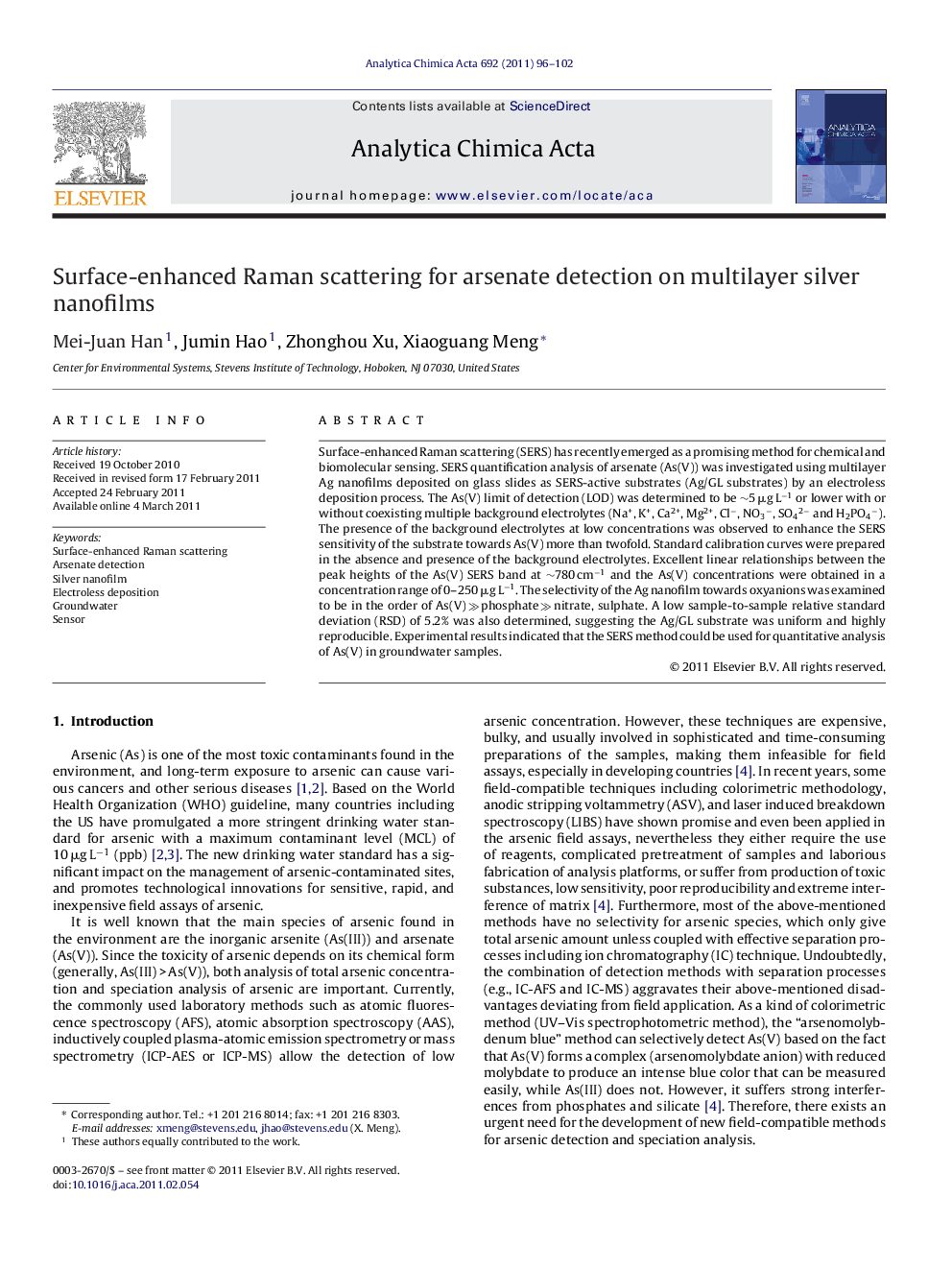| Article ID | Journal | Published Year | Pages | File Type |
|---|---|---|---|---|
| 1166130 | Analytica Chimica Acta | 2011 | 7 Pages |
Surface-enhanced Raman scattering (SERS) has recently emerged as a promising method for chemical and biomolecular sensing. SERS quantification analysis of arsenate (As(V)) was investigated using multilayer Ag nanofilms deposited on glass slides as SERS-active substrates (Ag/GL substrates) by an electroless deposition process. The As(V) limit of detection (LOD) was determined to be ∼5 μg L−1 or lower with or without coexisting multiple background electrolytes (Na+, K+, Ca2+, Mg2+, Cl−, NO3−, SO42− and H2PO4−). The presence of the background electrolytes at low concentrations was observed to enhance the SERS sensitivity of the substrate towards As(V) more than twofold. Standard calibration curves were prepared in the absence and presence of the background electrolytes. Excellent linear relationships between the peak heights of the As(V) SERS band at ∼780 cm−1 and the As(V) concentrations were obtained in a concentration range of 0–250 μg L−1. The selectivity of the Ag nanofilm towards oxyanions was examined to be in the order of As(V) ≫ phosphate ≫ nitrate, sulphate. A low sample-to-sample relative standard deviation (RSD) of 5.2% was also determined, suggesting the Ag/GL substrate was uniform and highly reproducible. Experimental results indicated that the SERS method could be used for quantitative analysis of As(V) in groundwater samples.
